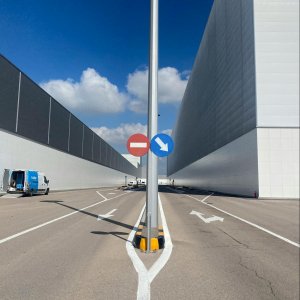The Power Behind Automation

STORY INLINE POST
Automation and Industry 4.0 practices are intricately related to efficiency and productivity in manufacturing processes. To achieve this efficiency, choosing which operations to automate is important. But determining how to power and manage automation equipment is equally relevant to achieve the highest levels of energy efficiency and cost optimization. Companies can decide between managing their equipment with a purely electrical installation or implementing pneumatic solutions and powering machines through compressors. For Ángel de Lope, General Manager of Kaeser Compresores de México, the choice is a no-brainer.
“Although it is true that transforming electric to pneumatic energy instead of powering everything directly from the grid can lead to conversion losses, it is more cost-efficient because it removes all the added expenses related to the equipment’s installation,” he says. Kaeser Compresores’ goal is to help its clients save as much energy as possible by offering the best compressing solutions in the market, minimizing any negative effects that pneumatics might entail.
Each electric motor needs its own electrical installation, while robots and other automation equipment require several electric motors to function. The installation would also require a number of different electric motors on standby for emergency use. De Lope says managing this through purely electrical installations is inefficient due to the number of wires and the complexity of the control rack. Pneumatic installation, on the other hand, only needs one compressor that can power all motors at the same time through one feeding pipe. If the plant needs a back-up system, the client only needs to install one more compressor.
The main disadvantage of using pneumatic equipment is the risk of air leaks, since each leak can represent losses of millions of dollars. De Lope says each unit of horsepower lost in the system represents US$600 in energy costs per year. “Fortunately, new aluminum pipelines coupled with effective leak-detection systems ensure an almost 100 percent leak-free operation,” he says.
“Our goal is to develop technology with a larger air output and lower energy demands,” says de Lope. All
the company’s innovations are focused on improving energy efficiency, ensuring minimal pressure drops and conversion losses, while implementing the best cooling 201 systems for each project. De Lope explains that all Kaeser compressors are powered by Siemens motors, which until recently followed IE3 efficiency standards. This is the European standard for Premium efficiency that, depending on the number of poles in the motor and its kW output, ranges from 80.7 to 95.8 percent. De Lope says that the most recent Kaeser equipment now features IE4 motors, a Super Premium efficiency standard that results in 10-15 percent more efficiency compared to the previous standard, according to the Washington State University Extension Energy Program. Thanks to these and other mechanical advantages in Kaeser’s rotary-screw compressors, de Lope says the company can offer between 10 and 30 percent more efficient solutions than its competitors.
However, what makes Kaeser a valuable partner for its clients is its analysis and understanding of how each client’s operations work. “We consider ourselves air doctors. Before quoting a compressor, we perform a pneumatic audit in the client’s facility, an Air Demand Analysis (ADA) to understand how the process works and we test the existing infrastructure for leaks and energy losses. We present a full diagnosis to the company and based on that we offer the best solution for the plant.” A complete diagnosis is particularly important in the automotive industry since, according to de Lope, many clients have a unified pneumatic installation for their entire plant without understanding that different stages in the production process require different air quality standards.
“There are many bad practices that we can detect with ADA and in the end companies might end up not needing to buy new compressors. Just fixing their existing infrastructure can result in energy savings and cost optimization,” de Lope says. “Electric engines and air compressors can represent up to 40 percent of a plant’s total energy consumption. Whatever we can offer in terms of energy efficiency goes a long way for our clients.”






















